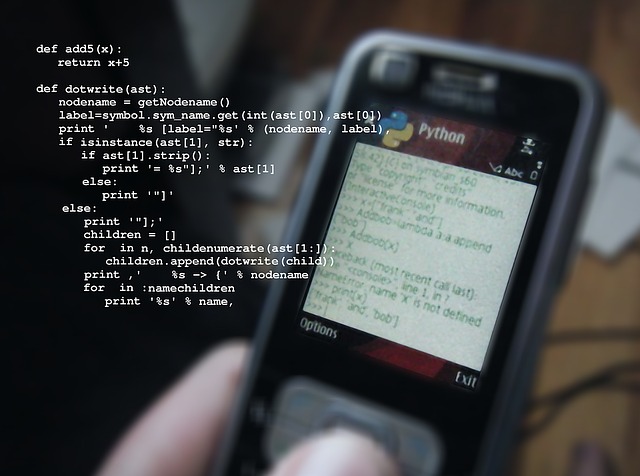Table of Contents
Data analysts and AI engineers are well aware of the importance of different programming languages in machine learning. But those who are new to programming need an excellent helping hand to guide them. R vs. Python is a trending topic nowadays among AI engineers.
Usually, programmers use Python for general programming. R language is mainly used by data analysts who work with large data sets or create complex data visualization. Machine learning engineers learn both languages because AI involves the use of both languages.
Overview
Both programming languages are open source, and anyone can use them freely. Both are suitable for data science tasks and can be used in machine learning. Besides having such similarities, there are some differences between the two languages.
The main difference between the two programming languages is their usage. Generally, Python is used for general programming, while R language is used for data analysis. Machine learning engineers or those solving complex data sets know the importance of both languages.
What is R language?
R language remained the favorite and most preferable language of data analysts for several years. The reason is that R has a large variety of libraries and fantastic tools that makes analysis more accessible.
Since its invention in 1992, it has over 13000 R packages for deep data analytics. The main uses of R language include the evaluation of machine learning algorithms and the cleansing of data.
Statistical analysis and data visualization is done by R language that works in steps. The whole task is broken into small steps and then done through several procedures. Data model operations get simpler when building with the R language.
What is Python?
If you are looking for a more accessible and robust programming language than R, Python is the best choice. It was developed just two years before the development of R, and now it’s gaining the attention of data analysts.
To perform machine learning at a large scale, data analysts usually prefer Python. The reason is that Python is easy to use, and its productivity and speed are far better than R. User-friendly data structures of Python make it the first choice of programmers and data analysts.
Python has its standard comprehension library that has enough tools to make data analysis and programming more accessible. Pandas, Numpy, Scipy, Scikit-learn, and Sea-born, are some of the Python libraries that can cover the whole data analysis tools.
Differences
Despite having several similarities, there are a lot of differences between the two languages. The fundamental difference between both languages is their objective. Python is used for general programming purposes, while R is used for data analysis and statistics.
There is some confusion in Python vs. R for data analysis, as both languages can do data analysis. Both languages have many similarities that create confusion. Both are open source programming languages, and the functions are almost identical.
Though we can also use Python for data analysis, the performance of Python for data analysis would not meet the standards. Similarly, R language can also perform every task that Python can do, but the performance would not be standard.
Both languages have specialization in their tasks. Python can be used for face recognition programs, while R is best for genomic research. Here we will discuss the differences between both languages so you can select the one that suits your job.
Data Analysis Goals
Both languages can do data analysis, but data analysis goals are different for both. The data analysis goal of R language is to create graphics and data visualization. On the other hand, Python analysis data for general programming and handling massive data.
Data Collection
When it comes to data collection, Python can also collect data from the web. Python can easily access all data formats. On the other hand, the R language is not perceptive enough to collect data from the web like Python. But you can import files from CSV and excel to your program through R.
Data Explanation
Pandas is a data analysis library for Python. In just a few seconds, you can explore and analyze the data through pandas. In contrast, for exploring data through R, you might have several options. You can do different statistical operations, perform machine learning and several data mining techniques.
Data Modeling
If you are doing data modeling through R, then you have to import libraries from other sources. Python, on the other hand, has its libraries for different types of data modeling techniques. Numpy, Scipy, and Scikit-learn are some of the Python libraries used for data modeling.
Data Visualization
For data visualization in R, you have to use ggplot2 for advanced data visualization. Python has several libraries that allow you to create different types of graphs and charts. For example, you can use the Matplotlib library to create regular graphs and Seaborn to create attractive graphs and charts.
Which One is Right for You? R vs. Python


Probably you are reading this article because you don’t know which is most suitable for you: Python or R. Several situations matter while selecting the correct language for data analysis or programming.
If you consult someone and ask him to guide you on which language to select, he will ask you some questions. Here we have mentioned all those questions, with a bit of explanation to make them more understandable.
Do You Have Programming Experience?
So, if you have previous programming experience or have learned another programming language, Python might be straightforward for you.
The reason is that the syntax of Python is easy to read as compared with R. For beginners, learning R might be a bit difficult, so most of the learners go for Python.
What Do Your Colleagues Use?
Programmers and developers use Python as it can handle extensive data analysis easily because of its easy-to-read syntax. On the other hand, R is used by Scholars and R&D professors for statistical purposes.
What Problems Are You Trying to Solve?
The selection of language also depends on what you are trying to do or what your problem is. If you are going to solve some statistical problems, then R language is recommended for you. For machine learning or performing experiments on a large scale, Python is the best choice.
How Important are Charts and Graphs?
The last thing that matters is the importance of charts and graphs in your problem. If you need attractive graphics for the visualization of your results, then R language is recommended. On the other hand, you can use Python for the visualization of results in an engineering environment.
Frequently Asked Questions (FAQs)
Is R better than Python?
If you are a data analyst, then Python is better than R in many aspects. Its use is easy and more robust than R. Pandas, Numpy, Scipy, Scikit-learn, and Sea-born are the five Python libraries covering almost every data analysis operation.
Is R easier than Python?
No, Python is easier to learn if you have previously learned any other programming language like Java or C++. Moreover, performing large-scale data analysis or machine learning through Python is more effortless than R.
Should I learn Python or R first?
It depends on your field of work. If you will be a data analyst, learn R first and then learn Python. Python is more recommended for machine learning engineers than R, as it is easy to perform large-scale machine learning programs with Python.
Should I learn both R and Python?
First, learn the language that is essential in your field. Then learning another language might be more helpful during your tasks. For a data analyst, both languages are essential, and he should have a full grip on both languages.
Can Python do everything that R can?
Python has such a large set of libraries that you can do everything with Python that is possible with R. But when Python vs. R machine learning is examined, we can see the difference in speed and performance.
Is R worth learning?
For those who are interested in increasing their skills, learning R is worth learning for them. A data analyst knowing both languages would be more successful than other data analysts.
Final Words
In conclusion, we can say that the R vs. Python debate is all oblivion and nihility. The thing is that both languages are essential, and both have their pros and cons. Learning both languages might be more fruitful as most companies and organizations use a combination of both languages.
Whereas for those who want to learn only one language they should know some basics about these languages. Python is used for general programming and is a universal language that anyone can learn quickly. In contrast, R language is for professional data analysts and researchers.
The above article was all about the two programming languages, Python and R. We tried to cover every detail about these two languages. If you still have some questions bumping in your mind, you may ask us directly in the comment section.



